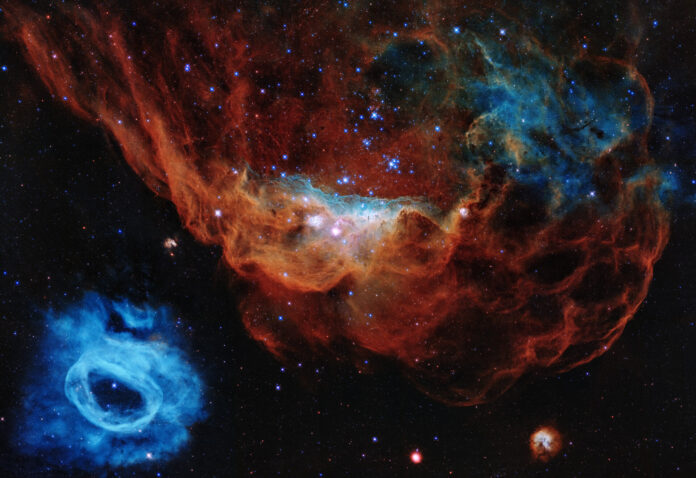The vast expanse of the universe has always captivated human imagination. Over the centuries, we have gazed at the stars and wondered about the mysteries hidden within the cosmic realm. Thanks to the remarkable advancements in technology, we now have the means to explore the wonders of the universe in unprecedented detail. One of the most significant tools in our cosmic exploration arsenal is the space telescope, which has revolutionized our understanding of the cosmos. In this article, we will delve into the incredible discoveries made by space telescopes and the invaluable knowledge they have brought us.
Space telescopes differ from their ground-based counterparts in many ways. Unencumbered by the Earth’s atmosphere, which distorts and absorbs light, space telescopes can capture clearer and sharper images of celestial objects. They are positioned in strategic locations beyond the Earth’s atmosphere, allowing them to observe the universe in a variety of wavelengths, ranging from radio waves to X-rays and gamma rays. By detecting these different wavelengths, space telescopes provide us with a more comprehensive view of the cosmos.
One of the most iconic and groundbreaking space telescopes is the Hubble Space Telescope. Launched into orbit in 1990, the Hubble has been instrumental in revolutionizing our understanding of the universe. It has captured awe-inspiring images of distant galaxies, nebulas, and stellar formations, revealing breathtaking beauty and intricate details. The Hubble’s observations have helped scientists estimate the age of the universe, refine our understanding of dark matter and dark energy, and provided evidence for the existence of supermassive black holes at the centers of galaxies.
The Hubble Space Telescope has also played a pivotal role in unraveling the mysteries of star formation. By studying stellar nurseries, regions where new stars are born, the Hubble has given us insights into the complex processes that govern the birth and evolution of stars. It has captured stunning images of protoplanetary disks, the swirling clouds of gas and dust where planets form, providing invaluable clues about the origin of our own solar system and the potential for life elsewhere in the universe.
In 2009, NASA launched the Kepler Space Telescope, a mission designed specifically to search for exoplanets, planets orbiting stars outside our solar system. Kepler has been a game-changer in the field of exoplanet research, discovering thousands of new worlds. By monitoring the brightness of stars and looking for slight dips caused by planets passing in front of them, Kepler has detected a wide range of exoplanets, including Earth-sized rocky planets within the habitable zones of their host stars. These findings have fueled excitement in the search for extraterrestrial life and have deepened our understanding of planetary systems beyond our own.

Another remarkable space telescope is the Chandra X-ray Observatory, launched by NASA in 1999. Chandra is designed to detect X-rays emitted by extremely hot objects in the universe, such as black holes, neutron stars, and supernova remnants. It has provided groundbreaking insights into the violent and energetic processes occurring in the cosmos. Chandra’s observations have unveiled the presence of supermassive black holes at the hearts of galaxies, shed light on the mechanisms behind star explosions, and revealed the dynamic nature of galaxy clusters.
More recently, in 2018, NASA launched the Transiting Exoplanet Survey Satellite (TESS), a space telescope dedicated to discovering exoplanets around the brightest stars in the sky. TESS uses the transit method, similar to Kepler, to detect exoplanets. By observing slight decreases in the brightness of stars when a planet passes in front of them, TESS has identified numerous exoplanet candidates for further study. This mission has significantly expanded our catalog of known exoplanets and has paved the way for future missions to characterize their atmospheres and search for signs of life.
These are just a few examples of the remarkable discoveries made by space telescopes. From unraveling the mysteries of the early universe to searching for habitable planets and studying exotic celestial objects, these telescopes have provided us with a wealth of knowledge about our cosmic surroundings. They have sparked curiosity and inspired generations to delve deeper into the unknown.
As we look toward the future, new and even more powerful space telescopes are on the horizon. The James Webb Space Telescope, set to launch in 2021, promises to be a revolutionary instrument. Equipped with advanced technologies, it will enable us to see even deeper into space and further back in time, providing unprecedented views of the early universe and potentially unveiling the secrets of the origins of life.
In conclusion, space telescopes have allowed us to embark on an extraordinary journey of discovery, revealing the wonders of the universe in ways never before imagined. From the majestic beauty of distant galaxies to the intricate details of planetary systems, these telescopes have expanded our knowledge and reshaped our understanding of the cosmos. As we continue to explore and push the boundaries of human knowledge, space telescopes will undoubtedly play a central role in our ongoing quest to comprehend the vastness and complexity of the universe.

